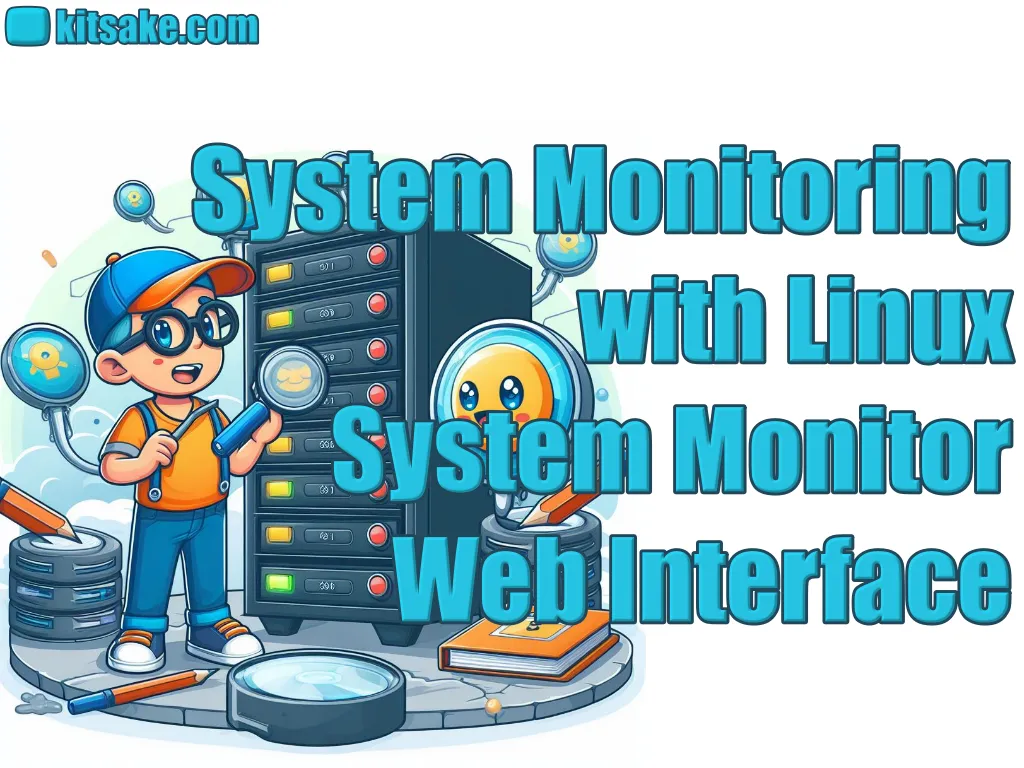System Monitoring with Linux System Monitor Web Interface
 |
| System Monitoring with Linux System Monitor Web Interface |
System Monitoring with Linux System Monitor Web Interface - With the increasing complexity of IT infrastructures, administrators and users alike require comprehensive tools to monitor and manage system resources effectively. One such solution gaining traction is the Linux system monitor web interface.
In this article, we'll explore the significance of system monitoring, delve into the features and benefits of it, and discuss how Linux system monitor web UI enhances overall system administration!
Importance of System Monitoring
System monitoring plays a pivotal role in ensuring the smooth operation and performance of IT environments. The best one is Zenoss monitoring that enables administrators to track metrics such as CPU usage, memory utilization, disk activity, network traffic, and more.
By proactively monitoring these parameters, administrators can identify potential issues, troubleshoot problems, and optimize resource allocation. Additionally, it also facilitates capacity planning to anticipate future requirements and scale their infrastructure accordingly.
Introducing Linux System Monitor Web Interface
The Linux system monitor web interface is a web-based tool designed to provide comprehensive system monitoring capabilities for Linux-based servers and desktops.
Developed with usability and accessibility in mind, this interface offers an intuitive dashboard that presents key performance metrics in an easy-to-understand format.
Users can access the interface remotely via a web browser, eliminating the need for complex installation procedures or specialized software.
Whether managing a single server or a large-scale deployment, the Linux system monitor and website interface offers scalability and flexibility to meet diverse monitoring requirements.
Features and Benefits
There are some features and benefits of the Linux system monitoring tools as follows!
1. Real-time Monitoring
The shortcut for system monitor in Linux provides real-time monitoring of essential system metrics, enabling administrators to track performance fluctuations and respond promptly to potential issues.
2. Customizable Dashboards
Users can customize the dashboard to display the specific metrics and visualizations that matter most to them. This flexibility allows for personalized monitoring tailored to the unique needs of each environment.
3. Alerting and Notifications
The interface offers configurable alerting mechanisms to notify administrators of critical events or performance thresholds. Alerts can be delivered via email, SMS, or other notification channels, ensuring timely intervention when problems arise.
4. Historical Data Analysis
Linux administrators can access historical data and performance trends, enabling in-depth analysis and long-term planning. By identifying patterns and anomalies over time, organizations can optimize resource utilization and mitigate potential risks.
5. Remote Accessibility
With web-based access, administrators can monitor system performance from anywhere with an internet connection. This remote accessibility is especially beneficial for distributed teams or when managing geographically dispersed infrastructure.
6. Resource Utilization Tracking
The interface provides detailed insights into resource utilization across CPU, memory, disk, and network components. This visibility allows administrators to identify bottlenecks, optimize resource allocation, and ensure efficient operation.
Enhancing System Administration
The Linux system monitor web interface gives administrators the tools to simplify system administration tasks and boost efficiency.
By consolidating system monitoring functions into an easy-to-use web interface, organizations can cut down on operational overhead and increase productivity. Real-time insights allow proactive issue resolution, reducing downtime and maximizing uptime.
Moreover, the interface is customizable, allowing administrators to tailor monitoring to their needs. Whether overseeing a single server or a complex infrastructure, the Linux system monitor web interface offers scalability and adaptability for various scenarios.


Post a Comment for "System Monitoring with Linux System Monitor Web Interface"
Post a Comment